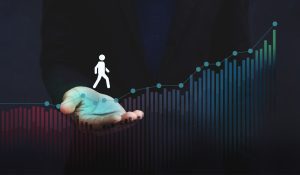
When B2B lead generation companies make online purchases, significant consideration is given to their decision-making process. A single misaligned sales or marketing campaign has the potential to dissuade potential customers from finalizing their purchase.
A sales funnel delineates crucial stages in the buyer’s journey. By grasping the mindset of buyers at each stage, both sales and marketing teams can deliver precise messages at opportune moments, thereby enhancing overall conversion rates.
Thoughtfully crafted B2B sales funnel stages guarantee prospective customers a fluid and captivating journey from initial awareness to final conversion. Let’s delve into actionable steps to construct a thriving B2B sales funnel that yields tangible results for your business.
How to Create a B2B Sales Funnel for Your Business?
Embarking on the journey to create a B2B sales funnel for your business requires a strategic blend of foresight, creativity, and analytical prowess.
As businesses navigate the complexities of the modern marketplace, a well-designed sales funnel emerges as a cornerstone for driving growth and fostering long-term customer relationships.
From defining target audiences to optimizing conversion pathways, let’s delve into the intricacies of constructing a B2B sales funnel that propels your business toward sustainable success.
- Customer journey mapping: The foundational step in the sales funnel stages B2B involves meticulously mapping your customer’s journey through each stage. Whether they’re in the awareness or consideration stage, delve into their thoughts and emotions using empathy maps. Understand their needs at each stage to offer the most valuable solutions.
- Content asset identification: Once your strategy is defined, it’s time for execution. Identify the specific content assets needed at each funnel stage, such as webinars, whitepapers, or workshops.
To create effective assets, deeply understand your customer’s pain points and goals throughout the funnel stages. Tailor your content to address these needs for better lead generation.
- Testing and iteration: Building your B2B sales funnel strategy is just the beginning; ongoing testing and iteration are essential. Consumer behavior evolves, and trends shift, necessitating continuous funnel optimization.
Adopt a scientific approach, experimenting with different strategies and analyzing results. Stay responsive to feedback from your marketing and sales teams, adapting your strategy accordingly to generate high-quality leads consistently.
Given the ever-evolving nature of the B2B landscape, particularly with the prevalence of SaaS, it’s imperative to grasp the unique journey that SaaS customers embark upon.
What Are the B2B SaaS Sales Funnel Stages?
Mastering the B2B sales funnel stages software is vital for securing clients and driving business expansion in SaaS sales. Each stage demands distinct strategies for optimal results:

- Prospects (Top Of The Funnel): At the onset, the emphasis lies on brand awareness and educating potential prospects about the value of your service. It’s about setting the stage for future engagement rather than immediate sales.
- Lead Qualification: As prospects progress, lead qualification becomes paramount. Here, the focus shifts to vetting leads based on their interest, budget, and decision-making authority. Prioritizing qualified leads enhances win rates and prevents resource wastage on unqualified prospects.
- Intent (Middle Of The Funnel): The middle stage entails responding promptly and thoroughly to inquiries, building connections, and addressing concerns. These efforts are pivotal in nudging prospects closer to the conversion point.
- Close (Bottom Of The Funnel): Culminating in the close stage, sealing deals marks the beginning of lasting client relationships. While not every interaction results in a win, closed deals pave the way for potential repeat business and contract extensions.
Having explored the B2B SaaS sales funnel stages, it’s time to see these strategies in action.
What Are Some B2B Sales Funnel Examples?
Every B2B funnel possesses its distinct characteristics. For instance, a B2B SaaS marketing funnel will differ significantly from a B2B e-Commerce or customized solution funnel. Each necessitates specific assets tailored to cover essential funnel stages.
Nevertheless, despite these variations, all B2B marketing funnels adhere to the same conceptual stages that traverse the psychological and practical customer journey.
There are six stages in the typical B2B customer journey:
- Awareness
- Interest
- Evaluation
- Engagement
- Purchase
- Loyalty
-
Awareness
In this stage, potential customers first recognize a need or desire, which can occur organically or through targeted marketing efforts across multiple platforms. They may discover new brands by researching relevant topics and drawing them into the awareness stage.
To capitalize on these opportunities, businesses can employ content syndication marketing strategies and SEO to enhance visibility. For those with marketing expertise, it’s advisable to implement acquisition strategies aligned with their marketing plan, utilizing PPC, SEO, social media marketing, inbound marketing, etc.
Alternatively, businesses lacking marketing capabilities may hire professionals or SEO agencies to manage these efforts.
Here are a few examples of B2B sales funnel strategies tailored for the ‘Awareness Phase’:
- PPC landing pages
- Informational blog posts
- YouTube videos
- Quora or Reddit answers
- Social media posts
- Podcasts
After recognizing their requirements, they may be motivated to transition to the subsequent stage, where they seek a reliable source of information to delve deeper into the company and its offerings.
-
Interest
As prospects transition to the interest stage, they seek information on potential solutions for their needs. Here, they become acquainted with your solution, focusing more on understanding the “who” and “why” aspects rather than evaluating specific providers.
Progressing from pain awareness to solution awareness and eventually product awareness, they gradually explore your product or service offerings. As they learn about your company, they may also become aware of competitors.
This marks the evaluation stage, where prospects assess whether your offering aligns best with their needs.
Here are a few examples of B2B sales funnel activities tailored for the ‘Interest Phase’:
- Product-based blog posts
- Product pages
- FAQs
- Webinars
- White papers
- Guest posting
- Conventions
-
Evaluation
During the evaluation phase, you must show the prospect that your solution is the most appropriate for their needs.
Developing a relationship with your leads to ascertain their ultimate objectives is now your main objective.
This is achieved by offering the content required to ease anxieties and concerns, establish credibility, foster trust, and articulate how your product or service differs from your competitors.
You should also apply Voice of Customer (VoC) copywriting on your landing pages, develop a consistent brand voice, and perfect your Unique Value Proposition (UVP). Consider your target audience when evaluating each of these.
Here are a few sales funnel examples for the ‘Evaluation Phase’:
- Pricing page
- Case studies
- Whitepapers
- Product documentation
- Product features page
- Product comparison tables
- Featured product reviews on known industry websites
- Thought leadership articles
- Customized solutions
- Video testimonials
- Customer Reviews
- Client Brand logos
- Awards
- Trust badges (Capterra, G2, Trust Pilot, etc.)
- Privacy policy
- Security and compliance credentials and certificates
- Proper CTAs
After persuading prospects to try your product, they transition to the crucial step of engagement.
-
Engagement
During the engagement stage, your leads engage with your sales team, starting with qualification based on their position in the buyer’s pyramid (distinct from the buyer’s journey), typically handled by an SDR. This step is critical to avoid wasting resources on prospects unlikely to buy.
Once qualified, your focus shifts to building a personal connection and showcasing your offering’s strengths. Establishing trust and rapport between the buyer and your salesperson is key.
Demonstrate how your business can meet their needs, outline the implementation process, and offer tailored solutions for their challenges. Effective communication of your understanding of their pain points and proposed solutions is essential.
Here are a few B2B sales cycle examples for the ‘Engagement Phase’:
- Product tour or walkthrough
- Educational presentations
- Live demo
- Newsletter
- Email signature marketing campaign
- Technical support
- Special discounts
- Onboarding
-
Purchase
The purchase stage is often straightforward, representing the culmination of potentially months of effort. When prospects make a purchase, they transition into clients. Congratulations! However, now it’s crucial to deliver on the promises made.
Here are a few B2B sales funnel examples for the ‘Purchase Phase’:
- Contact page
- Telephone number
- Subscription form
- Saved items page
- Cart
- Cart abandonment automated email
- Payment page
- Thank you page
While it may seem like the journey concludes here, there’s more to consider. If you consistently provide exceptional value to your customers, you’ll likely introduce an additional stage to your funnel – Loyalty.
-
Loyalty
The loyalty stage is pivotal in the funnel, fostering post-purchase engagement essential for nurturing a B2B sales pipeline. Satisfied clients are more inclined to remain loyal, enduring challenges, and advocating for your brand.
They become valuable brand advocates, offering testimonials and positive reviews. Accumulating advocates solidifies your position as the premier brand in your niche through word-of-mouth referrals.
Here are a few B2B sales funnel examples for the ‘Loyalty Phase’:
- Email marketing nurture campaign
- Product onboarding (for SaaS B2B funnels)
- B2B Email marketing
- Upsell proposals (email marketing automation)
- Branded email signature
- Customer success calls
- Product engagement tracking
- CSAT emails
- Events and webinars
- Product updates
- User interviews
Conclusion
A robust B2B sales and marketing funnel demands strategic foresight, creativity, and analytical insight. A well-designed funnel guides prospects seamlessly from initial awareness to final conversion, ensuring a captivating journey at every stage.
Businesses can optimize lead generation and maximize ROI by mapping customer journeys, creating tailored content assets, and embracing continuous testing and iteration. Embracing the unique characteristics of SaaS sales funnel stages is essential for securing clients and driving expansion.
From awareness to loyalty, each stage offers distinct opportunities to engage and nurture prospects, fostering enduring client relationships and sustained business growth.
Unlock the potential of your B2B sales funnel stages with Binary Demand. Strengthen relationships, generate qualified leads, and drive sustainable growth with our expert email marketing strategies and more.



